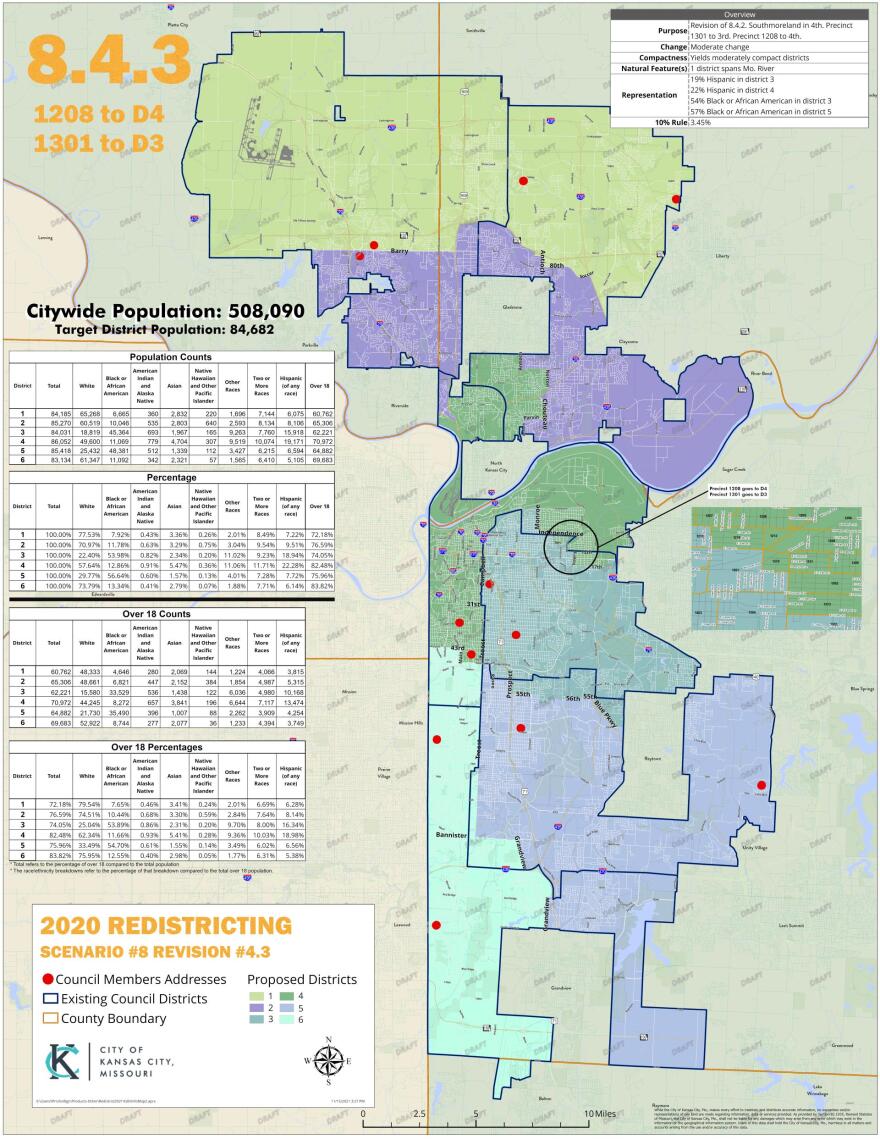After weeks of intense debate, Kansas City’s Redistricting Commission decided Monday to recommend major changes to the boundaries of all six City Council districts, with the most profound changes affecting the Northland.
The recommendation goes to a Kansas City Council committee in early December, before a final council decision on new boundaries by the end of this year.
The redistricting is required because of population changes in the 2020 Census. New council district boundaries will affect everything from power politics to equality of representation to how money for infrastructure is distributed throughout the city.
“This is tough,” commission member Reid Day acknowledged Monday, noting that all six Council districts will have major boundary changes starting next year, especially affecting the 2023 mayoral and council elections.
The commission, a citizens’ advisory group, voted 6 to 3 in favor of recommending a map that splits Districts 1 and 2 in the Northland horizontally, generally along Barry Road. That’s a radical change from the vertical boundary that has divided the Northland since 1991.

A horizontal divide concentrates wealthier neighborhoods farther north in District 1 and puts less affluent working-class neighborhoods generally south of Barry Road in District 2.
Civic leaders wanted the vertical Northland split, saying that traditional approach has promoted Northland solidarity, collaboration and progress.
But a commission majority responded to public comment from low-income and working-class voters who said they haven’t felt heard or represented by the four council members, who live in more prosperous areas near or north of Barry Road.
Lower income voters said they would have more political access and clout with council representatives who live in older, less affluent Northland neighborhoods.
...The more persuasive argument with me came from those who advocated for change, for giving an opportunity for better representation and for what’s best for the cityClinton Adams Jr., Kansas City Redistricting Commissioner
Commissioner Clinton Adams Jr. and others in the majority said they were persuaded by those residents who have felt left out of the political process. They also thought a horizontal split might help erase the Missouri River as a barrier to city unity.
Adams acknowledged he had talked to more people who oppose the horizontal split than support it.
“However, the more persuasive argument with me came from those who advocated for change, for giving an opportunity for better representation and for what’s best for the city,” Adams said.
Commissioners Mike Kellam and Martin Rucker, who live in the Northland, favored the vertical split. They said one redistricting goal is to make minimal changes in redrawing boundaries. But this will be a drastic change for the Northland — which comprises 38% of the city — that many residents oppose.
“It just doesn’t seem right,” Rucker said.
Other major changes are coming, affecting Midtown, the Country Club Plaza and the southland.
When Kansas City last drew council districts in 2011, the city had about 460,000 residents, so the six council districts were drawn to each have approximately 76,500 people.
But the city’s population is now 508,090, with growth occurring unevenly. Districts 1 and 2 in the Northland and District 4 (representing Briarcliff, downtown and Midtown) each have about 90,000 residents while Districts 3, 5 and 6 in the city’s urban core and southern sector each have fewer than 80,000.
The Redistricting Commission is recommending new districts that each have about 85,000.
To consolidate more Latino neighborhoods, the 4th District boundaries would include both the West Side and old Northeast, as well as a bigger Northland chunk to the Gladstone city limits. That means District 4’s southern boundary at 59th Street would move close to 43rd Street, pushing the Country Club Plaza and much of the southwest corridor into the 6th District, a huge change.
Lynn Horsley is a freelance journalist in Kansas City. Follow her on Twitter @LynnHorsley.




